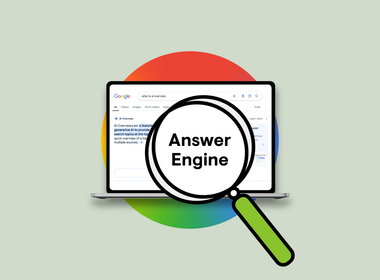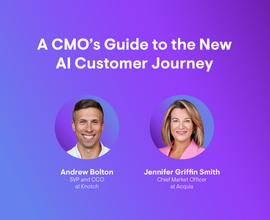What is an Answer Engine and How Does it Work?
What is an answer engine?
An answer engine is a system designed to directly answer a user's question, instead of providing a list of web pages that might contain the answer. Think of it as getting a concise, specific answer or a direct solution, instead of a map to potentially find that information yourself.
These engines leverage artificial intelligence, natural language processing, and deep data sources to understand the intent behind a user’s question and provide a relevant, actionable response. The goal is to provide accurate information efficiently by fully understanding a user’s question instead of just matching keywords.
The power of an answer engine comes from its ability to break down a lot of information from multiple sources and present it in a digestible format. That way, users receive one consolidated answer instead of sifting through numerous documents. Answer engines also often provide links to the sources that informed their answer if users want to dive deeper. This approach saves time and resources, making it easier and more user-friendly to find information.
What's the difference between an answer engine and a search engine?
There are two key differences between answer engines and search engines: the prompts used and their primary outputs.
An answer engine is either a search engine or an LLM, and honestly, the largest traditional search engine right now, Google, is quickly becoming an LLM itself.
But the biggest difference between the two is the type of query. In traditional search, you had a 2 to 5-word query. In the world of LLMs, you have a prompt, which is more like a statement about what you’re looking for; your sentiment is in there.
A traditional search engine (like the original versions of Google or Bing ) crawls and indexes the web, then provides a list of links to pages it views as relevant to your keywords or query. You then navigate to those pages to find your answer.
An answer engine, on the other hand, aims to understand the meaning of your question and provide a direct answer within its own interface. It's about getting you the answer you need, not just directions to it.
The main difference is the way in which answer engines represent and understand the user's search queries and prompts. Their nuanced understanding of the user's intent, what they're looking for, and why they're looking for it. And then the ability for them to give users highly personalized responses that align with what they’re looking for.
In fact, a lot of answer engines even crawl the web just like a normal search engine would. But they don't give you back responses the way that you see from a traditional search engine like Google and Bing. They shortcut the information delivery cycle, instead of you going to look for information, they present the information to you.
Why are answer engines important?
Answer engines are completely changing how people find information and interact with brands. As AI has forced search to evolve, users now expect fast, accurate, and contextually relevant answers. For digital marketers, SEOs, and content creators, this evolution is reshaping the competitive landscape. Instead of creating content with SEO and Google in mind, brands need to develop content that is both easily discoverable and immediately actionable for AI-driven platforms.
Examples of answer engines
Here are a few examples of platforms that incorporate answer engine capabilities:
- Google’s AI Mode and AI Overviews: While still a search engine at its core, Google is pivoting into the answer engine space, providing users more direct answers for many queries alongside their classic blue links.
- Wolfram Alpha : A computational knowledge engine that directly answers factual queries by computing data from its curated knowledge base.
- Perplexity AI : A conversational answer engine that provides direct answers with cited sources.
- ChatGPT and other AI Chatbots: These conversational AI models can function as answer engines, providing information and explanations in response to user prompts. Keep in mind that some of these chatbots have knowledge cutoffs and can’t provide accurate information past a certain date, so be sure to double-check the information you get from chatbots.
Answer engines in review
Answer engines have changes search as we know it. Unlike traditional search engines that present a list of links, answer engines leverage AI to understand the context and purpose behind each query and deliver direct, highly relevant answers.
That means maximizing your visibility isn't about maximizing keywordKeyword
A keyword is what users write into a search engine when they want to find something specific.
Learn more presence anymore. It's about prioritizing authoritative, well-structured content and expanding your SEO strategy with AEO / GEO best practices, such as leveraging schema markup, providing concise and comprehensive answers to common user questions, and anticipating the conversational prompts these engines favor.
FAQs
- What is generative engine optimization (GEO)?
- What is answer engine optimization (AEO)?
- What is AI optimization (AIO)?
- What is AI Mode?

![Patrick Reinhart, VP, Services and Thought Leadership, [object Object]](https://cdn.sanity.io/images/tkl0o0xu/production/9bc72298b24ad01b732de4c3376f79546d20f81c-3542x3542.png?fit=min&w=100&h=100&dpr=1&q=95)
![Wei Zheng, Chief Product Officer, [object Object]](https://cdn.sanity.io/images/tkl0o0xu/production/dcfa62c0fe34ba0c31f910b818874cd160ad8839-3542x3542.png?fit=min&w=100&h=100&dpr=1&q=95)






